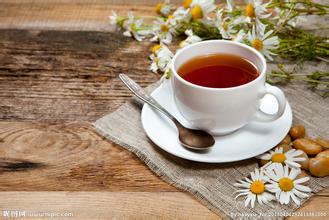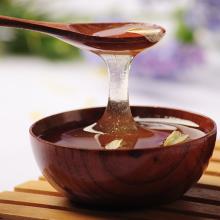The planting situation of Coffee beans in Vietnam Flavor description of brewing methods introduction of G7 taste characteristics
Traditional Vietnamese coffee is the way of drinking coffee with condensed milk, the flavor is very strong, and the milk flavor basically covers the original aroma, sour taste and charred aftertaste of coffee. And Saigon coffee is slightly different from the traditional Vietnamese coffee, its unique production and processing technology, high standards of ingredients, restore the pure fragrant taste of coffee, so that the majority of consumers drink pure Vietnamese original coffee.
Vietnam Coffee
Vietnam Coffee Atlas
This is the use of a modified Vietnamese pot to extract pure Vietnamese coffee beans by dripping. And the most important feature of Vietnamese coffee beans is baked with special cream, so there will be a strong tropical coffee wrapped with a strong creamy flavor.
There are two main kinds of instant coffee in Vietnam: vinacafe (Weina Coffee) and Central Plains G7 coffee.
Vina three-in-one instant coffee is produced and exported by Vietnam Bian he Vina Co., Ltd., the market share of Vina coffee in Vietnam has been maintained at more than 45%, in a leading position. At present, Wiener has participated in the China-ASEAN Expo for many years, and Wiener Coffee is often seen in some influential exhibitions in the mainland. VINACAFE is selected from the famous high-quality BUON ME THUOT coffee beans, high-quality cream and sugar, full of natural fragrance and value for enjoyment. The product contains 85 calories per 20g, fat 24g (4%), protein less than 1g, carbohydrates 14g (5%), each person's normal daily calorie intake is about 2000 calories, can be adjusted according to personal needs, drinking Vinacafe will never get fat. In the field of coffee processing, there have been some dilapidated processing plants since 1975, and there are several processing plants in northern Tongjiao, Fukui and other places, whose equipment was made in East Germany from 1960 to 1962. In the south, the old factories left by former landowners such as ROSSI,DELPHANTE are also small. While expanding the coffee planting area, Yue also began to build new coffee processing plants, first producing some stand-alone equipment, and later imitating the production line according to the HANGXA style, the main manufacturers are the Haiphong May 1 Machinery Factory, the Ministry of Industry A74 Plant in Shoude, Ho Chi Minh City, and so on. In recent years, many companies and farms in Vietnam have imported new processing plants with relatively complete equipment from Germany and Brazil, and imported more than a dozen sets of coffee processing production lines from PINHALENSE of Brazil. Since then, more and more factories began to imitate and improve their own production of Brazilian equipment. In recent years, the processing capacity of Vietnamese coffee has been greatly improved, which can guarantee the export of 150000 to 200000 tons of coffee kernels per year. In addition, there are many enterprises with inadequate equipment, which only rely on a few stand-alone machines for processing, and purchase newly processed coffee from farmers to ensure export standards. The coffee purchased from the private sector is mainly handled by each farmer through the cement yard or soil yard. Farmers in many places use small grinders to grind dried coffee fruits into coffee kernels and sell them to coffee buyers.

Important Notice :
前街咖啡 FrontStreet Coffee has moved to new addredd:
FrontStreet Coffee Address: 315,Donghua East Road,GuangZhou
Tel:020 38364473
- Prev

Where are the best Geisha coffee beans produced in Panama?
Rosa coffee raw beans have a very beautiful blue-green, jade-like warm texture, smell fresh grass, peach, berry flavor and oolong tea unique milk sweetness that most coffee beans do not have. it seems that aroma and taste of this kind of things need to be associated, but a hint of tea smell is obvious to us. In order to highlight the characteristics and aroma of this bean
- Next

Introduction of Taste Grinding scale Powder for Grade Flavor description of Kilimanjaro Coffee beans in Tanzania
Tanzania's main coffee producing area, located at the foot of Mount Kilimanjaro, is rich in volcanic soil. Some coffee trees planted here are more than 100 years old. Coffee was first introduced by Christians from Kenya to grow coffee. Coffee trees must be carefully taken care of, weeded and fertilized. And old branches must be cut off so that new branches can grow to maintain the quality of coffee beans.
Related
- Detailed explanation of Jadeite planting Land in Panamanian Jadeite Manor introduction to the grading system of Jadeite competitive bidding, Red bid, Green bid and Rose Summer
- Story of Coffee planting in Brenka region of Costa Rica Stonehenge Manor anaerobic heavy honey treatment of flavor mouth
- What's on the barrel of Blue Mountain Coffee beans?
- Can American coffee also pull flowers? How to use hot American style to pull out a good-looking pattern?
- Can you make a cold extract with coffee beans? What is the right proportion for cold-extracted coffee formula?
- Indonesian PWN Gold Mandrine Coffee Origin Features Flavor How to Chong? Mandolin coffee is American.
- A brief introduction to the flavor characteristics of Brazilian yellow bourbon coffee beans
- What is the effect of different water quality on the flavor of cold-extracted coffee? What kind of water is best for brewing coffee?
- Why do you think of Rose Summer whenever you mention Panamanian coffee?
- Introduction to the characteristics of authentic blue mountain coffee bean producing areas? What is the CIB Coffee Authority in Jamaica?

